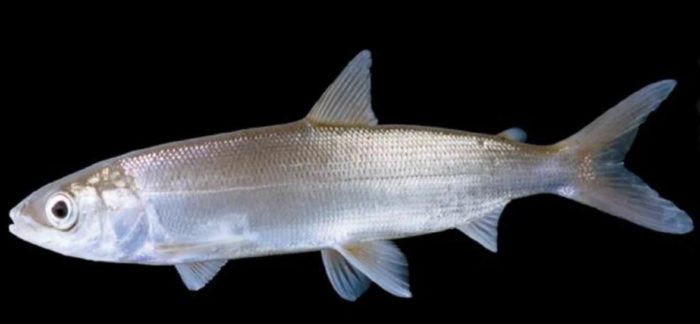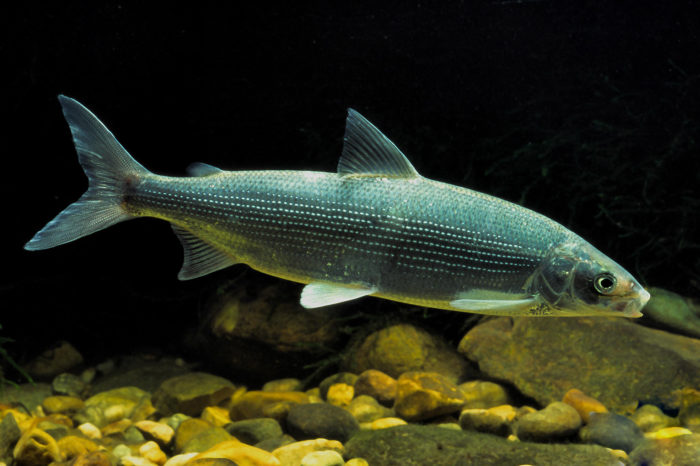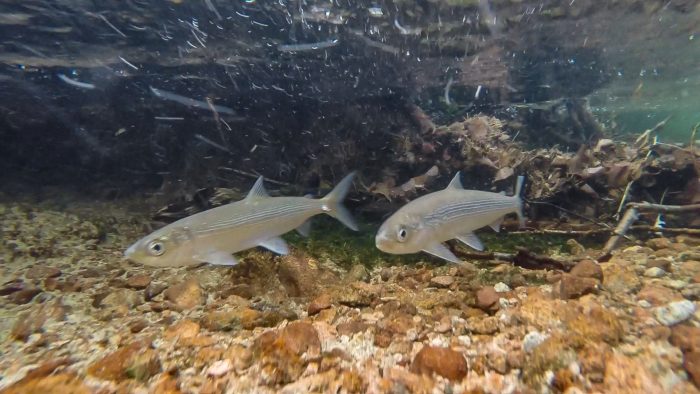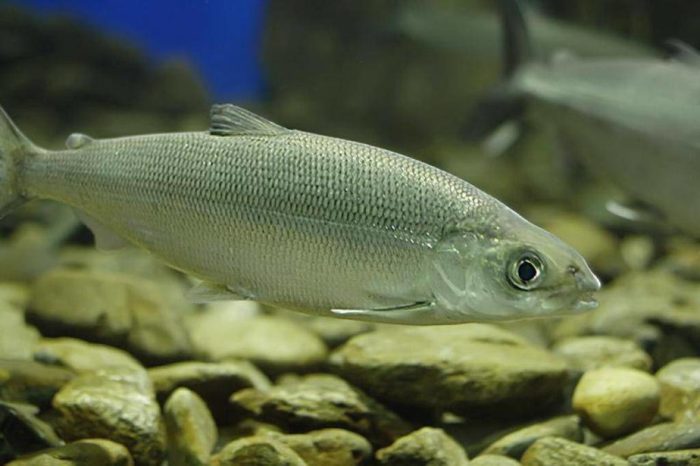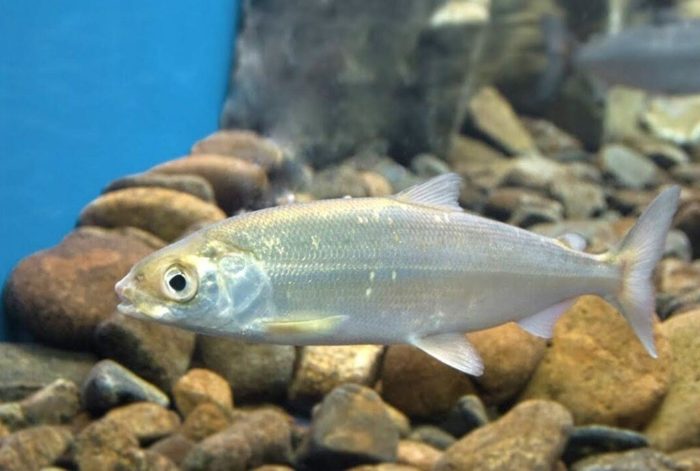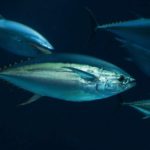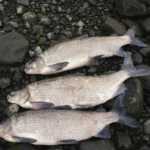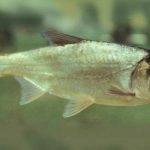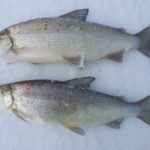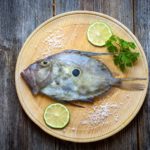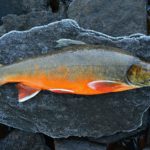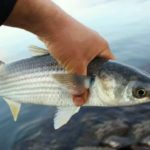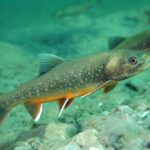Omul is the most popular fish from Lake Baikal, which has enforced restrictions on its catch. This fish is also found in the Arctic Ocean and its tributaries. This is the desired catch of every angler, which is allowed to be caught throughout the year. The fillet of this valuable fish is considered a delicacy and has health benefits, despite its high fat content.
Description of the fish
Omul belongs to the salmon family and is considered a type of whitefish. It has an ancestral form - an arctic species, which belongs to migratory fish. This species is native to the Arctic Ocean but travels to rivers up to 1,000 km away to spawn, so it is known as the “migratory whitefish.”
The Baikal omul is believed to have originated from an Arctic variety. He lives in Lake Baikal. In addition, it migrates to nearby rivers to spawn. One of the species is successfully bred in Mongolia. This fish happily lives not only in the Russian Federation, but also in Canada and the Alaska Peninsula.
Appearance
The omul has an elongated body, which gradually tapers towards the tail. If you look closely at the photo, the similarities between it and the grayling become noticeable, but it still has its own unique characteristics.
- A well-defined dark stripe runs along the body.
- The elongated shape allows you to move quickly in the water.
- The head is relatively small with large eyes; sometimes dark spots are visible on it.
- The scales are thin and fit tightly to the skin.
- The upper side of the body appears darker than the lower side, with varying shades of brown. The belly of the omul is very light, almost white.
- There is usually a greenish tint on the sides.
- At the end of the tail there is an adipose fin - an indicator that it belongs to the salmon family.
The Arctic variety is the largest, the fish reaching a length of up to sixty centimeters, while the Baikal species is smaller, its upper limit being fifty centimeters. The weight of the fish ranges from 0.25 kg to three kilograms. Typically, the Baikal omul weighs about 1000 g.
Habitat
Omul lives in both fresh and salt water bodies with a high oxygen content and an abundance of crustaceans.It can be found at a depth of up to three hundred meters, which is where the biggest catches usually occur. The standard depth for living and feeding of Arctic omul is about five meters.
Depending on the environment in which the fish feeds, three types are distinguished:
- coastal;
- deep-sea;
- pelagic.
Representatives of the latter species usually live in the water column and, as a rule, are the largest of all.
In Lake Baikal, omuls, as a rule, live near the entrance to large rivers, where there is an abundance of crustaceans and areas suitable for spawning. To find these fish, you should look for places where there is a large amount of silt, as this usually indicates an accumulation of crustaceans on which this salmon relative feeds.
Habitat in Russia
Omul, a relative of salmon, is always associated with Lake Baikal. It also lives in the Arctic Ocean, at the confluence of Siberian rivers; however, there are no omul populations in the rest of the Arctic. During spawning, it migrates long distances. In addition, Amur species are present in the reservoirs of the Far Eastern region and are artificially bred in the Amur Bay.
Diet
Omul is considered a fish that feeds on both plant and animal foods. For example, crustaceans, benthos, insect larvae, caviar, juvenile fish. In addition, it does not disdain smelt, capelin and small cod. It mainly feeds on small zooplankton.
In August, this fish practically does not feed, as mature individuals gather for spawning.
Natural enemies
Baikal seals and cormorants are predators that eat omuls. It is quite difficult for seals to catch this nimble fish, so they often crawl into fishing nets in search of a treat.
Both bears and otters hunt omul, although this fish usually avoids shallow waters.However, when she goes to spawn in mountain rivers, the bear can easily catch her.
The creation of a peled population depletes food sources for omul. Overfishing by fishermen and poachers has a particularly detrimental effect on fish numbers.
How long does omul live?
This fish can live for at least ten years, and some Yakut specimens reach an age of even twenty-five years.
It reproduces from September to the first ten days of November.
Sea ciscoes are able to swim long distances upstream to spawn during the summer months of July and August. They usually travel in large groups, eventually splitting into small subgroups. They prefer to choose spawning grounds away from the coastline. These fish lay their eggs on a sandy bottom with a moderate current at a depth of two meters.
During spawning, a female omul produces a huge number of eggs – tens of thousands. The incubation period for eggs is quite long, usually two hundred days or more. After hatching, the young feed on tiny plankton and stay in groups, making their way to the place that will become their home.
The omul reproduces several times during its life, and the ability to mate ends by the time it reaches thirteen years of age. Unlike other salmonids, it survives the spawning period and returns to its natural habitat. When he returns, he begins to eat heavily and gain weight and fat.
Varieties
Different varieties of omul are distinguished according to their primary habitat. It is believed that all species of omul originated in the Arctic, while some (for example, white) live in the Yenisei, while others (for example, Baikal) are present exclusively in the lake of the same name.
Arctic omul
This species is native to the Arctic Ocean and is able to adapt to varying salt concentrations. According to the description, representatives of the Arctic species have the largest weight and fatty flesh, which is easily absorbed by the human body. Spawning mainly occurs in Siberian rivers.
Yakut omul
This variety of omul belongs to the category of Arctic species. As for any differences in terms of habitat, this species is also found in the Arctic Ocean. It differs in taste from the Baikal one, since it lives in a harsh climate and prefers a different diet. Since the habitat is colder, the Yakut omul stores more fat. During spawning, it is able to swim long distances and migrate for three to four months.
Baikal omul
The origin of the omul fish in Lake Baikal has not been fully investigated. Some scientists believe that this subspecies arrived there from the Arctic Ocean during glacial or interglacial periods, making it a subspecies of the Arctic variety. However, unlike its marine relatives, this valuable fish lives only in fresh water bodies.
The Baikal omul usually weighs from two hundred grams to two kilograms, but large specimens are rare. It begins breeding at the age of five, staying close to its home waters rather than migrating like other species. This species is semi-anadromous and swims only short distances up the rivers flowing into the lake.
Various varieties of the Baikal species have been identified, including:
- northern (Northern Baikal);
- Chivyrkuisky, from the eastern shore;
- Selenga from the river of the same name;
- posolsky (Little Sea), found in the Small Sea.
The Baikal population of the subspecies has been able to remain large thanks to laws prohibiting unregulated fishing, and the prospects for its recovery are encouraging.
Northern
This is a subspecies of fish that also lives in Lake Baikal, but only in the northern part - hence its name. Characterized by the fact that it prefers to live near the coastline, in waters where the temperature is higher. This is a small species, with an average weight of 0.25 kg. People who have feasted on its meat note that its flesh is especially tender.
Yenisei omul
The Yenisei species is found off the coast of the bay of the same name. Already in July, it begins to prepare for spawning, and then makes a journey of one and a half thousand kilometers to reproduce. Spawning occurs every few years. Its taste is comparable to other types of omul.
Malomorsky omul
This subspecies of the Baikal omul lives in the southwestern part of the lake, which is separated by an island, which is why it is called the Small Sea. Its body weight is smaller compared to other subspecies, but this in no way deprives it of its useful qualities.
About fishing for omul
Omul is caught not only on a commercial scale, but also local residents catch it to feed their families and sell it on the market. Tourists often buy smoked and salted omul as a souvenir.
Fishermen are attracted to omul because it can be caught all year round.
Fishing is prohibited in Lake Baikal, and in other water sources there are rules prohibiting the fishing of salmon during the spawning period.
During the omul fishing season, it can be caught using various methods, such as:
- for spinning;
- with fly fishing;
- bottom fishing;
- with summer float gear.
As temperatures drop, ice fishing season begins.Omul is an intelligent and wary fish species, which makes fishing an exciting challenge, almost a sport.
Fishing is best done early in the day or just before dusk. Experienced anglers also often go out at night. To catch this particular species, it is recommended to use a spinning rod with small spoons. It is important to remember that this type of fish has delicate lips, so it is recommended not to hook so sharply, and when landing, you should use a net. In winter, jigs are used as bait. It helps to have a tackle box full of artificial flies on hand.
When trying to catch Baikal omul in winter, you should remember that the transparency of the ice is of great importance. If the fish grabs the hook, there will be a slight twitch on the line; The line should be pulled back with a soft, wide movement.
If it is windy or there are sudden changes in weather conditions, fishing will not be as effective. However, if a large group of omels approaches the hole, then the angler will definitely be successful.
Artificial baits in shades of red and orange are very effective. Omul prefers moving bait. Fly fishing requires the use of different types of flies, and bottom fishing requires a sinker weighing at least 20 g.
During the summer months it is permissible to fish both from the shore and from boats. For the second option, the rods should be no more than three meters in length.
Fishing at night will be successful thanks to the light of the lantern, which attracts crustaceans, and behind them a group of omuls.
About meat
This type of salmon has delicate, light pinkish flesh that is devoid of any bitter aftertaste. Omul is rightfully considered an exquisite seafood product. The most delicious way to prepare it is by lightly salting it.
The omul does not have a large number of bones; only ten percent of its mass consists of them. This type of meat is suitable for the production of high-quality canned fish, for which the fish is cooked either in its own juice or in tomato paste.
100 grams of omul fillet contains approximately:
- Calories: about 100 kcal.
- Proteins: approximately 20 g.
- Fats: about 6-8 g.
- Vitamin D: approximately 15-20 mcg (micrograms).
- Vitamin B12: approximately 2-3 mcg.
- Vitamin A: trace amounts.
- Magnesium: about 30-40 mg.
- Phosphorus: about 150-200 mg.
- Potassium: about 300-400 mg.
- Selenium: about 20-30 mcg.
- Iodine: about 20-30 mcg.
It is important to note that the nutritional value will vary slightly depending on how the fish is prepared (boiling, frying, baking, etc.). Also, the nutritional value varies depending on the size and quality of the fish. This fish is a source of high-quality proteins and healthy fats such as Omega-3 fatty acids, which are beneficial for cardiovascular health and overall health.
Beneficial features
This fish is an ideal food for those looking to shed pounds and maintain a healthy diet as it is low in calories and nutritionally beneficial.
Omul fat is beneficial for the health of the cardiovascular system due to its content of polyunsaturated fatty acids. Its meat is a source of minerals and B vitamins, which are important for the healthy functioning of the nervous system. It also contains fat-soluble vitamins A, D, E.
Given the high level of helminth infestation, it is recommended to avoid eating raw meat of the Baikal subspecies, as this can lead to illness. To properly prepare stroganina, you should first deep freeze it. It is also important to marinate fish properly to reduce the risk of helminth infection. It is recommended to choose the hot smoking method, although it is believed that cold smoking makes the carcass tastier.
However, like other types of fish, omul may contain some amount of mercury. Consumption of meat high in mercury is very harmful to health, especially for pregnant women, children and people with weakened bodies. Therefore, it is recommended to choose fish from clean sources and limit consumption of large specimens, which can accumulate mercury.
Some people are allergic to fish. It includes various symptoms such as skin rashes, itching, swelling and breathing problems. If a person is allergic to fish, it should be avoided.
Omul and cooking
This fish is prepared in various ways, for example, boiled, made into soup, fried, salted, smoked and baked over coals. In addition, it is used to create sauces and fillings for pies. When preparing omul, there is no need to add oil, since the fish itself is fatty.
Smoked omul, both hot and cold, is very popular among seafood lovers. Roasting it in the oven or grilling it with fresh vegetables and herbs makes it a nutritious dish for those looking to eat a balanced diet.
Sea omul is used to prepare sugudai - a dish for which fish fillets with skin should be immersed in a brine consisting of various spices, chopped onions, garlic cloves, salt, vinegar and vegetable oil. It should then be stored in the refrigerator for three to four hours before serving.
The dry salting technique, which is quite popular, involves leaving the fish ungutted, but removing the gills. Then cover with a layer of coarse salt and put nettle grass on top. This practice is widely used by fishermen during the summer.

